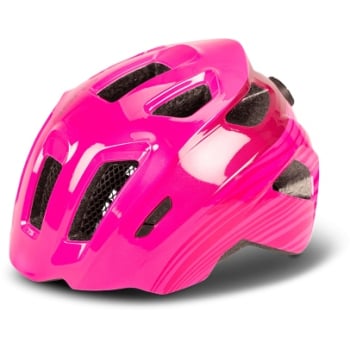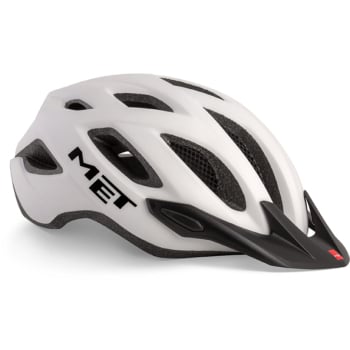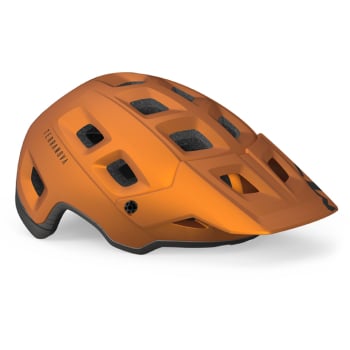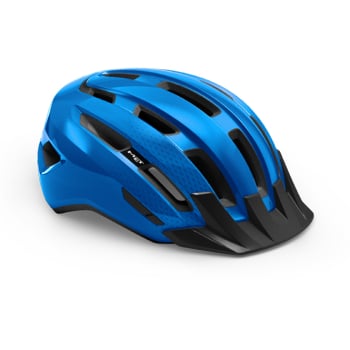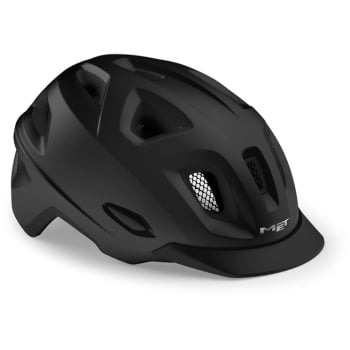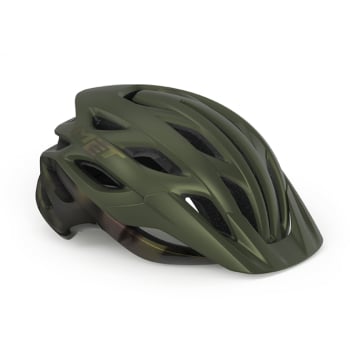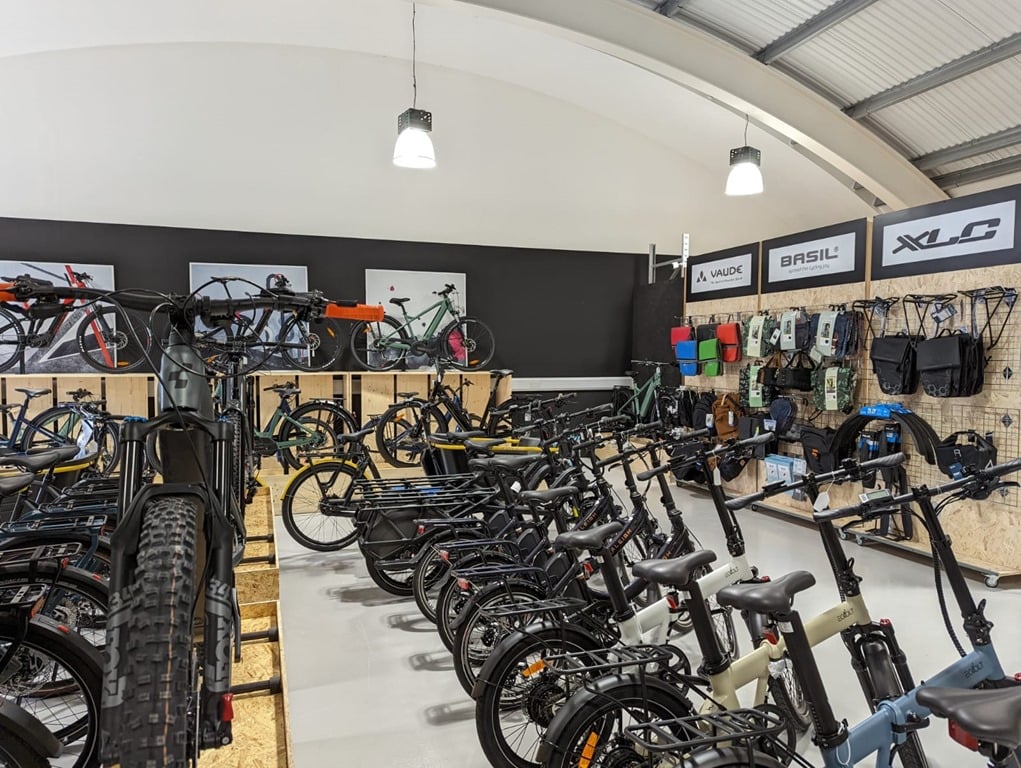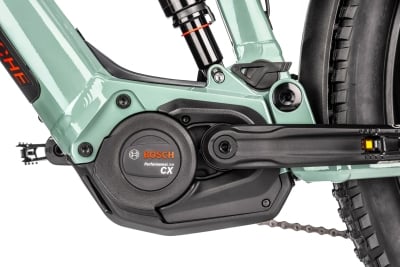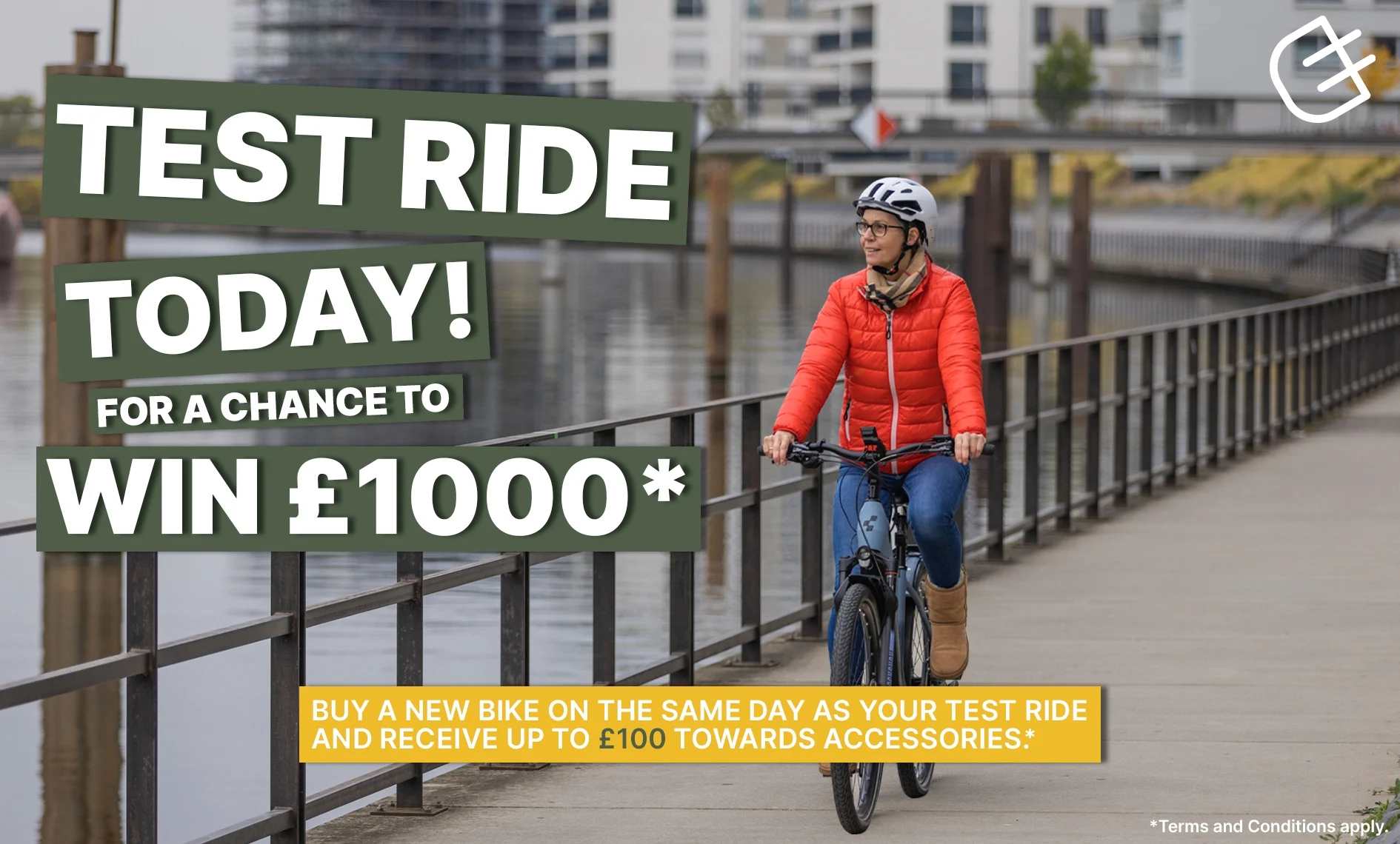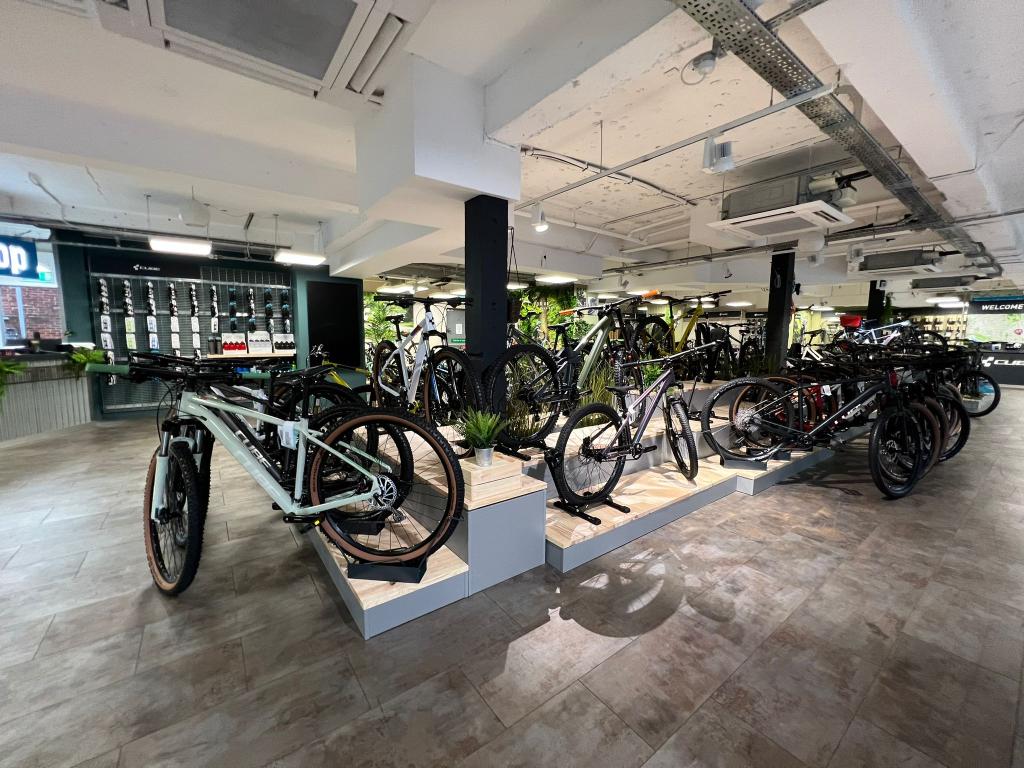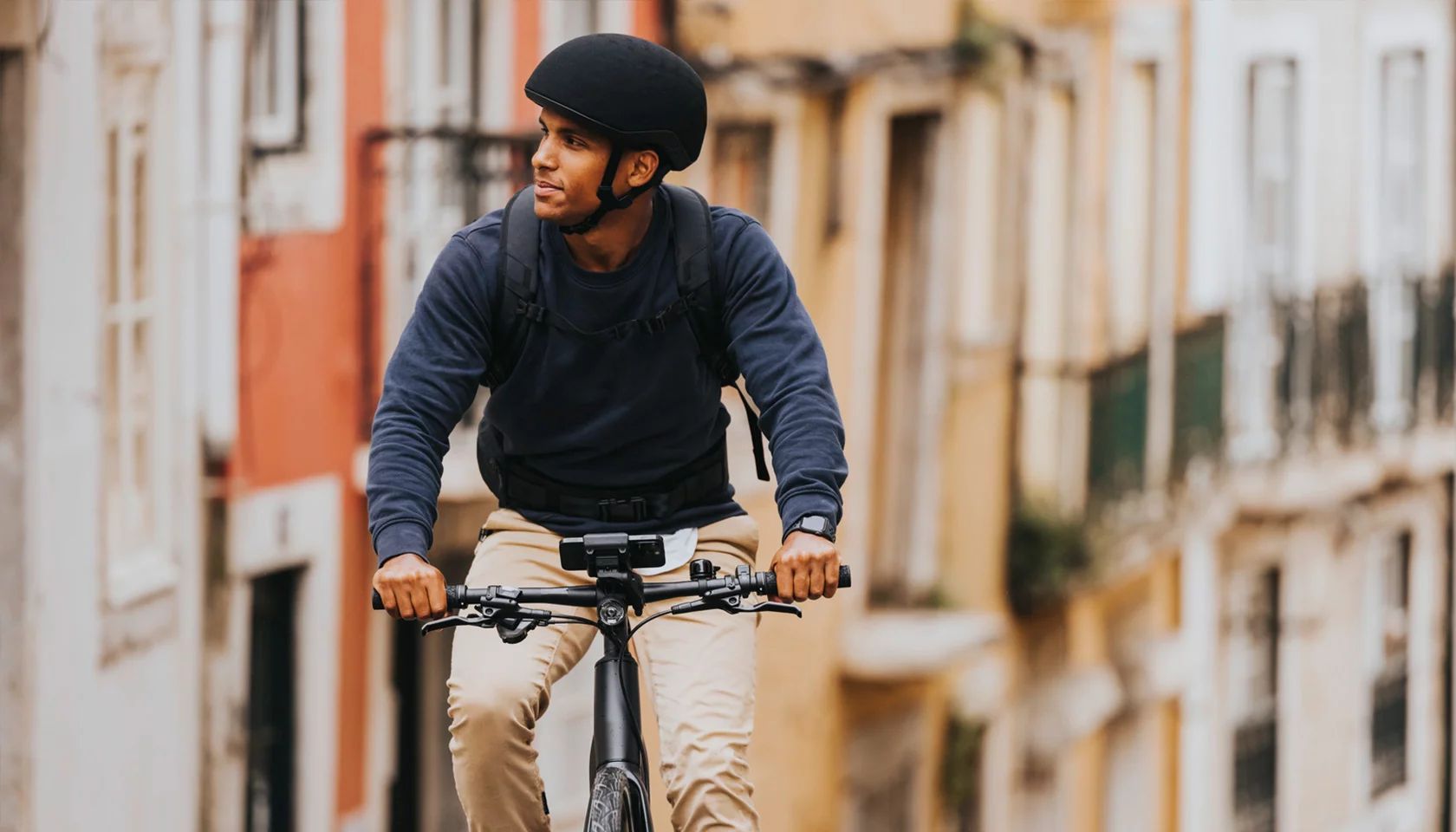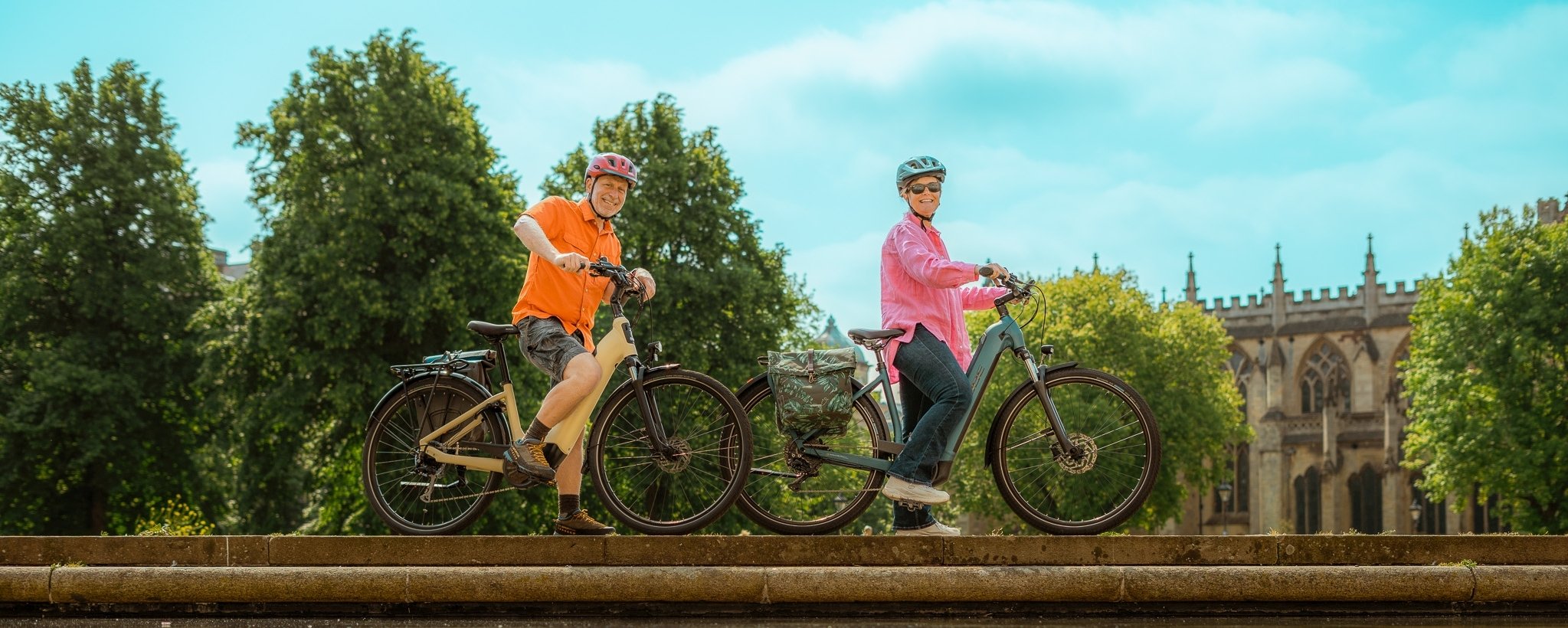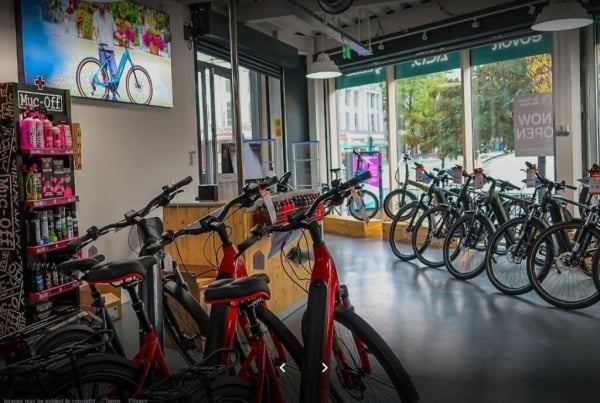How to choose the right helmet

The cycling helmet is not just a protective cycling accessory anymore, it’s a piece of fashion too, designed to complement any cycling outfit whether you are mum taking the kids to school on your cargo bike or a weekend warrior tearing up the trails at your local trail park.
Helmet technology has seen a significant shift in recent years. Gone are the old clunky and ugly ‘lids’. Modern helmets are stylish with sophisticated technical features built in.
In this guide, our expert Paul Prince will walk you through how to buy the correct size, he will talk about different styles and some of the features that protect the modern rider.

What size helmet do I need?
This is easy. Stand in front of a mirror, take a measuring tape and measure the circumference of your head about 2-3cms above your eyebrows keeping the tape level, close to your skin but not tight and above your ears. This will give you a measurement in cm.
Helmets are sized as a range which your measurement must fall within, e.g. Medium 52-57cm. If your head measured 55cm, this would be the correct size for you.
Paul says: If you are struggling get someone else to help you and take a few measurements to double check.
A typical helmet size guide. This may differ slightly between brands.


Cycling helmet features to consider
Let’s breakdown some of the key features in a helmet to look for:
- Padding – the inner lining of the helmet. More expensive helmets will have removeable pads you can wash or replace. Important for comfort
- Retention system – modern helmets have a ratchet system at the back to help it sit on your head correctly and reduce movement. This is a really important feature.
- Ventilation – basically the holes in the helmet that let air in to cool you down. Bigger holes let more air in.
- Chinstrap – keeps the helmet on and in a fixed position. This is really important for comfort too.
- Weight – Only really important on full face or competition helmets.
- Reflectivity – If you are commuting or riding in the dark, this may be a consideration.
- Impact protection – MIPS is a popular feature which offers additional protection. We’ll talk about this more below.
- Visor – Some helmets, particularly those for MTB and leisure, come with removable peaks or visors. These are useful in the sun and the rain.
- Safety standard – All helmets we sell are certified to European safety standard EN 1078
Paul says: Focus on comfort and the correct type of helmet within your budget.
Further Reading
What style of helmet do I need?
We sell five styles of helmet which align with the type of riding you may do but it’s fine to use helmets in other disciplines too:
- Kids
- Leisure
- Mountain
- Road
- Urban
Kids Helmets
These helmets are always colourful and designed for young children. Sizing will be dependent on age and head size. For really small children manufacturers adopt a one-size approach
KIds
Leisure Helmets
These have removeable peaks and are similar in look to mountain bike helmets but less technical and are usually a lower to mid-price point.
Leisure
Mountain Helmets
These feature open face or full-face helmets with removable visors. They often include technical safety features like MIPS (see below) and good quality padding, ventilation and are low-weight. Price points are often mid to high.
MTB
Road
These helmets don’t have visors and have the widest price points. The most expensive will be super-light, aero and technically the most advanced in terms of retention system and impact protection.
Road
Urban helmets
These are helmets that have elements that would be useful in urban environments. Often not as ventilated as leisure helmets, they may have a peak or visor and they may be reflective or sometimes incorporate a rear light.
Urban
How to check your helmet fits correctly?
- Always try a helmet on before you buy it. Different brands will fit slightly differently for similar sizes. You need to find one that feels right. Think of it like trying on shoes.
- When you put the helmet on, it needs to sit level on your head. Not too far forwards or backwards.
- If it feels too tight before you’ve adjusted it, you need the next size up.
- Tighten up the rear retention system. It needs to be tight enough to stop any sloppy movement of the helmet.
- Pay attention to any pressure points, particularly around your temple areas. You don’t want any pain.
- If you are happy with the fit, adjust your straps so they under tension but not tight and form a v-shape around your ears.
- When the chin strap is done up leave 2-3 fingers worth of space in between your chin and strap.
- Colour and design is your choice! Be bold!
Paul says: Always adjust your helmet in the mirror or get someone to help you.
What is MIPS?
MIPS technology uses a slip-plane system that moves inside the helmet. This layer is designed to rotate inside the helmet upon impact with the intent of trying to slow down the energy transfer to and from the head and ultimately reduce the effect of that impact.
Paul says: If you are at a higher risk of coming off your bike (eg MTB, Downhill riding) I would recommend a MIPS helmet for the extra impact protection it gives you
MIPS
Some Final thoughts
You know what size you need, and you know what type of helmet you want. Here are a couple more things to think about
- Helmets don’t last forever. Age, UV from the sun take their toll. Aim to replace your helmet every 3-5 years.
- If your helmet ever takes an impact from a crash or just being dropped. Replace it no questions asked. Even if you can see no damage. They are designed to absorb impacts which might not be visible but will compromise it’s integrity.
- Keep them clean. You will sweat and they may get dirty. For hygiene reasons clean them with soap and water and consider a helmet sanitizing product.
- Don’t share. Its your helmet, setup for you and only you. Don’t let anyone else use it.
- Know the law. Helmets are not mandatory in the UK but are in other countries. Check before you go.
Did You Like This Article?
Subscribe to our Newsletter now. We will send you no more than one email a week which will include offers, news and our latest promotions
Please select all the ways you would like to hear from :
You can unsubscribe at any time by clicking the link in the footer of our emails. For information about our privacy practices, please visit our website.
We use Mailchimp as our marketing platform. By clicking below to subscribe, you acknowledge that your information will be transferred to Mailchimp for processing. Learn more about Mailchimp's privacy practices here.
About the Author
Paul is our IT & Technical Operations Manager and has been cycling for over 35 years with over a decade of industry experience as well.
Paul started racing when he was 16 years old and has raced all over the UK on the road, track and offroad. In 2009 he opened his own cycle shop and ran that for six years until he took a brief break from the industry before returning in 2017.
He has hung his racing wheels up now preferring to ride socially with the odd event. Touring is a new passion. He likes to pack up his panniers and go on a short tour and write about it on his blog.
Paul lives in North Worcestershire and has worked for The Electric Bike Shop since 2020. He is one our most experienced cyclists and industry professionals.
.jpg)

